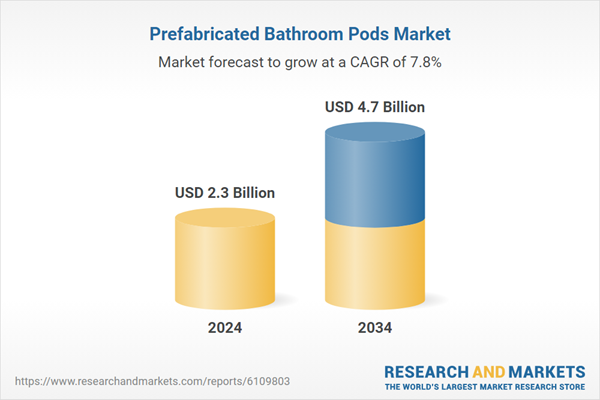These pods are manufactured in off-site facilities under controlled conditions, ensuring consistent quality and rapid delivery to construction locations. With construction timelines becoming more compressed, especially in the student housing, healthcare, and hospitality sectors, builders are turning to prefabricated bathroom units as an efficient solution. Modular methods, including bathroom pods, have been shown to reduce overall build times by up to 50% compared to traditional construction.
Factory-assembled bathroom pods also reduce outdoor labor dependency, helping mitigate the ongoing shortage of skilled construction workers. By producing units off-site, developers can better forecast project costs and minimize material waste, which is increasingly important amid fluctuating prices for basic materials like steel and timber. These benefits make prefabricated pods an attractive option for large-scale developments.
Most manufacturers now embed smart technology and sustainable features into their products. These pods often come equipped with motion-sensing faucets, occupancy-triggered lighting, leak-monitoring systems, and water usage dashboards. Environmentally friendly elements such as low-flow fixtures, LED lighting, and recycled composite materials are also standard in many offerings. These features help developers meet green building certification criteria and align with broader ESG objectives.
Steel-frame bathroom pods segment generated USD 800 million in 2024 and is projected to hit USD 1.6 billion by 2034. Their rising popularity comes from their strong yet lightweight structure and ability to blend with diverse architectural designs. These pods are especially well-suited for projects like residential towers, student dormitories, and luxury hotels, where load restrictions and space optimization are critical. Steel construction also resists corrosion and physical damage, providing a durable, low-maintenance solution for developers looking for long-term performance.
In 2024, the stainless steel segment accounted for a 39.3% share and is projected to grow at a CAGR of 6.7% through 2034. Stainless steel’s superior corrosion resistance, ease of cleaning, and sleek appearance make it a preferred material in high-traffic environments. Whether used visibly in fixtures or structurally within the pod frame, stainless steel provides long-term durability under high moisture conditions. It also helps meet hygiene standards demanded by clients, such as hospitals and institutional facilities. The material’s non-porous surface actively resists bacterial growth, making it ideal for high-usage applications where sanitary compliance is essential.
United States Prefabricated Bathroom Pods Market was valued at USD 320 million in 2024 and is expected to grow at a CAGR of 8.3% through 2034. Demand is being fueled by rapid urbanization, ongoing labor shortages, and a broader shift toward more efficient construction techniques. Modular units are becoming more widely adopted across hospitality developments, healthcare facilities, and large-scale multifamily housing projects. As U.S. builders continue exploring faster, more sustainable alternatives to conventional builds, bathroom pods are becoming integral to project planning and delivery.
Key manufacturers in the market include Pivotek, Bathsystem, Walker Modular, StercheleGroup, Taplanes, Offsite Solutions, Elements Europe, SurePods, Interpod, Oldcastle SurePods, Modulart, Hydrodiseno, Hellweg Badsysteme, B&T Manufacturing, and Buildom Prefab Systems.
Companies operating in the prefabricated bathroom pod space are strengthening their market position by expanding manufacturing capabilities and investing in design flexibility to meet a wide range of architectural requirements. Many are diversifying their product portfolios to include customizable layouts and features aligned with client demands across various sectors. A strong focus is being placed on integrating smart technology and sustainable materials to meet regulatory and ESG targets. Collaborations with real estate developers, architects, and general contractors have become critical to secure repeat contracts and streamline delivery cycles.
Comprehensive Market Analysis and Forecast
- Industry trends, key growth drivers, challenges, future opportunities, and regulatory landscape
- Competitive landscape with Porter’s Five Forces and PESTEL analysis
- Market size, segmentation, and regional forecasts
- In-depth company profiles, business strategies, financial insights, and SWOT analysis
This product will be delivered within 2-4 business days.
Table of Contents
Companies Mentioned
- B&T Manufacturing
- Bathsystem
- Buildom Prefab Systems
- Elements Europe
- Hellweg Badsysteme
- Hydrodiseno
- Interpod
- Modulart
- Offsite Solutions
- Oldcastle SurePods
- Pivotek
- StercheleGroup
- SurePods
- Taplanes
- Walker Modular
Table Information
| Report Attribute | Details |
|---|---|
| No. of Pages | 190 |
| Published | June 2025 |
| Forecast Period | 2024 - 2034 |
| Estimated Market Value ( USD | $ 2.3 Billion |
| Forecasted Market Value ( USD | $ 4.7 Billion |
| Compound Annual Growth Rate | 7.8% |
| Regions Covered | Global |
| No. of Companies Mentioned | 15 |









